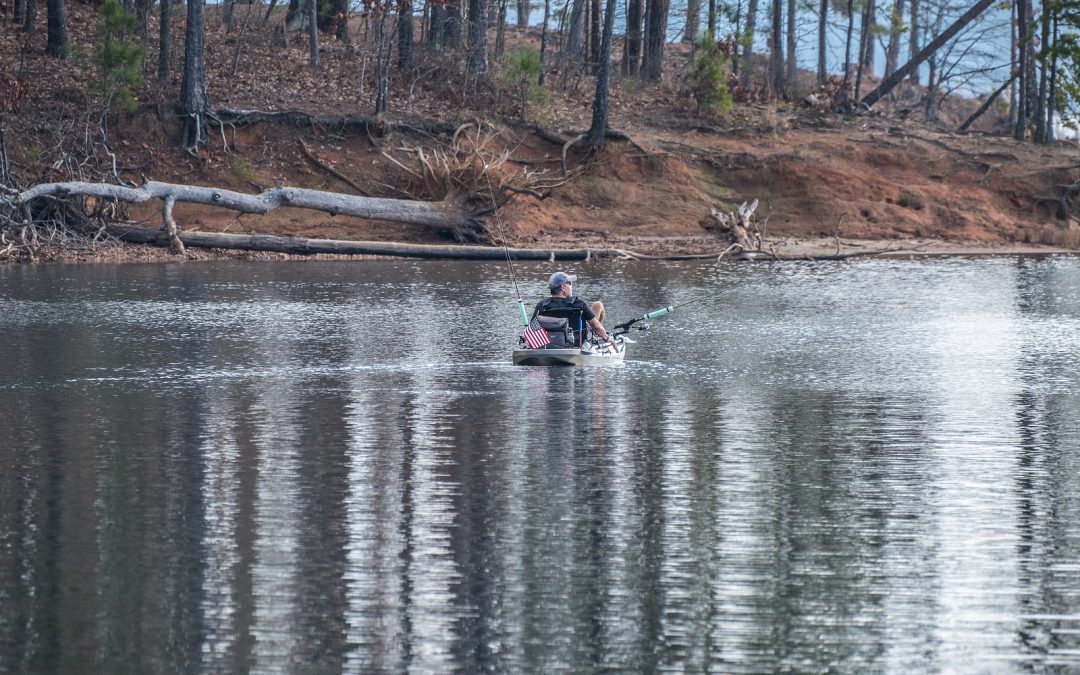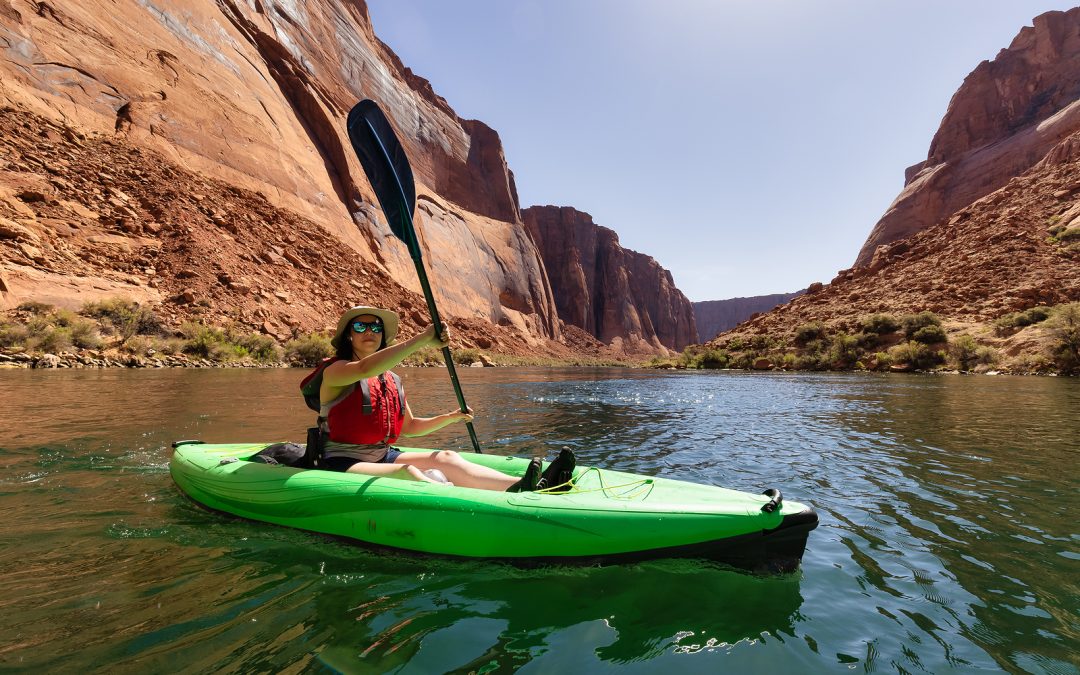Paddling a tandem kayak can be a fun and rewarding experience for two people looking to explore the water together. However, it can also be challenging if the paddlers are not in sync. Knowing how to paddle it correctly is essential to get the most out of a tandem kayak.
The first step in paddling a tandem kayak is establishing a sound communication system between the two paddlers. This can involve agreeing on specific signals or hand gestures that indicate when to turn, stop or change direction. It is also essential to decide who will be in charge of steering the kayak, as this person will need to take the lead in deciding where to go.
Once the communication system is established, the paddlers can work together to propel the kayak forward. This involves using a combination of forward strokes, backward strokes, and turning strokes to move the kayak in the desired direction. By working together and communicating effectively, two paddlers can enjoy a fun and rewarding experience on the water in a tandem kayak.
Understanding Tandem Kayaks
What is a Tandem Kayak?
A tandem kayak is a type of kayak that is designed to be paddled by two people. Unlike a single kayak, a tandem kayak has two seats, allowing two people to paddle together. Tandem kayaks can come in various shapes and sizes, but they are typically wider than single kayaks, making them more stable and easier to paddle.
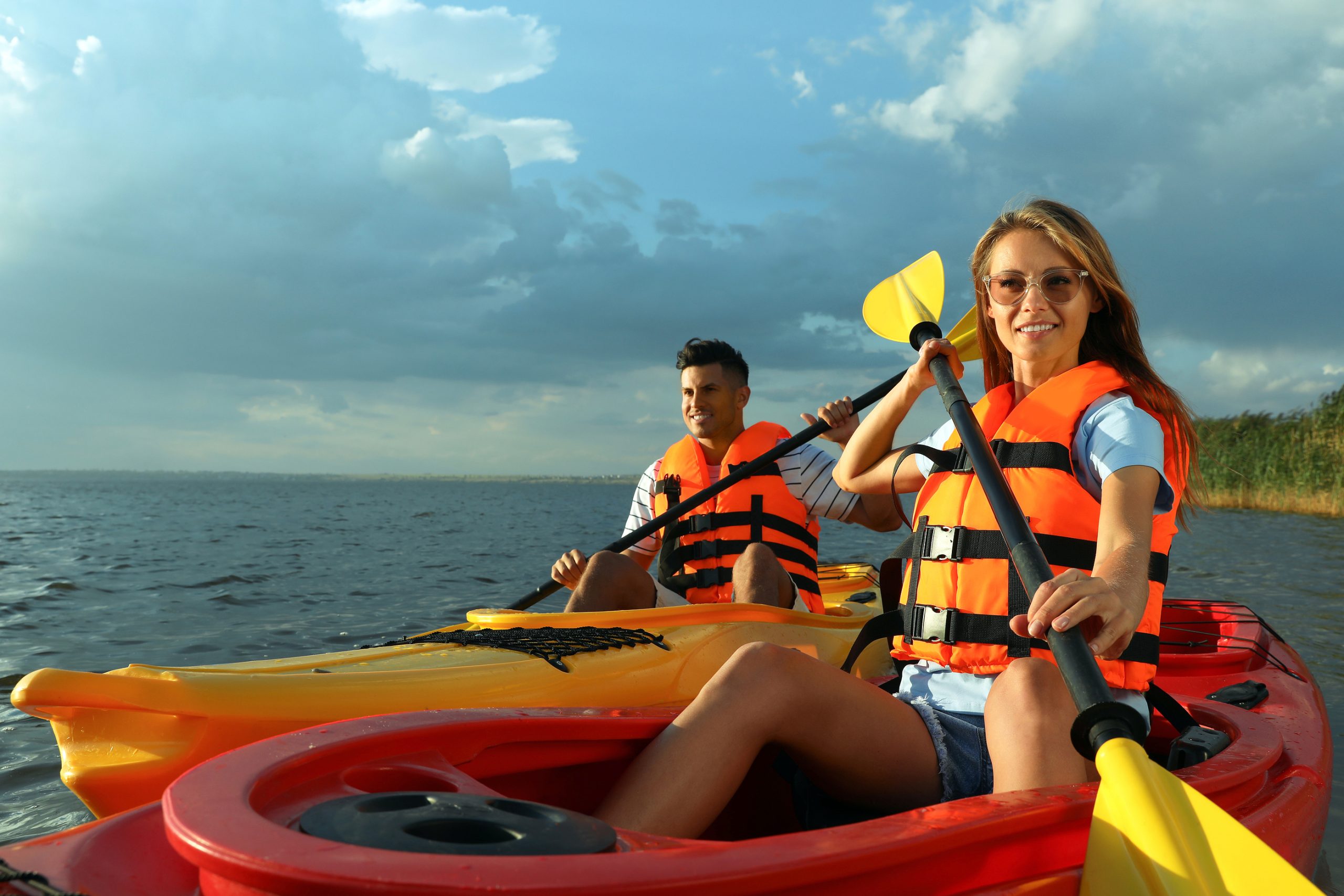
Benefits of Tandem Kayaking
Tandem kayaking has many benefits over single kayaking. First and foremost, it allows two people to paddle together, which can be a great bonding experience. Additionally, tandem kayaking can be a great way to introduce someone to kayaking who may feel uncomfortable paddling alone. Tandem kayaks are also great for longer trips, as they carry more gear than a single kayak.
Another benefit of tandem kayaking is that it allows for better teamwork. Paddling a tandem kayak requires coordination and communication between the two paddlers, which can be a fun challenge. Additionally, a tandem kayak can be a great way to improve your paddling skills, as you will need to work together to navigate the water.
Overall, tandem kayaking can be a fun and rewarding experience for both experienced and novice kayakers. Whether you are looking to bond with a friend or family member or want to explore the water in a new way, a tandem kayak can be a great choice.
Basic Paddling Techniques
Paddling a tandem kayak requires coordination and communication between the two paddlers. Three basic paddling techniques are essential for maneuvering a tandem kayak: the forward stroke, the reverse stroke, and the turning stroke.
Forward Stroke
The forward stroke is the most basic and essential technique for paddling a tandem kayak. It involves dipping the paddle blade into the water at the front of the kayak and pulling it back towards the paddler’s hip. The paddle blade should be fully submerged in the water, and the stroke should be smooth and continuous. The front paddler should take a longer stroke than the rear paddler to prevent the kayak from veering off course.
Reverse Stroke
The reverse stroke is used to slow down or stop the kayak. It involves pushing the paddle blade away from the paddler’s hip and pulling it forward through the water. The paddle blade should be angled slightly towards the rear of the kayak to create a braking effect. The rear paddler should take a longer stroke than the front paddler to prevent the kayak from turning.
Turning Stroke
The turning stroke is used to turn the kayak left or right. It involves taking forward and reverse strokes on one side of the kayak while the other paddler takes no or minimal strokes. For example, if the paddlers want to turn left, the front paddler should take a series of forward strokes on the kayak’s left side while the rear paddler takes a series of reverse strokes on the right side of the kayak. This creates a turning effect by creating more resistance on one side of the kayak than the other.
Communicate with your partner and coordinate your strokes to ensure smooth and efficient paddling. Practice these basic techniques to improve your paddling skills and enjoy your tandem kayaking experience.
Advanced Paddling Techniques
Experienced paddlers may want to learn more advanced techniques to improve their paddling skills. Here are two techniques that can take your tandem kayaking to the next level:
Draw Stroke
The draw stroke is a technique that allows you to move the kayak sideways. It is useful when you need to avoid obstacles or make precise maneuvers. To perform a draw stroke, follow these steps:
- Plant the paddle blade in the water on the side of the kayak opposite to the direction you want to move.
- Pull the paddle towards the kayak while keeping the blade parallel.
- Twist your torso toward the draw stroke to increase its power. Release the paddle blade from the water when moving the kayak to the desired distance.
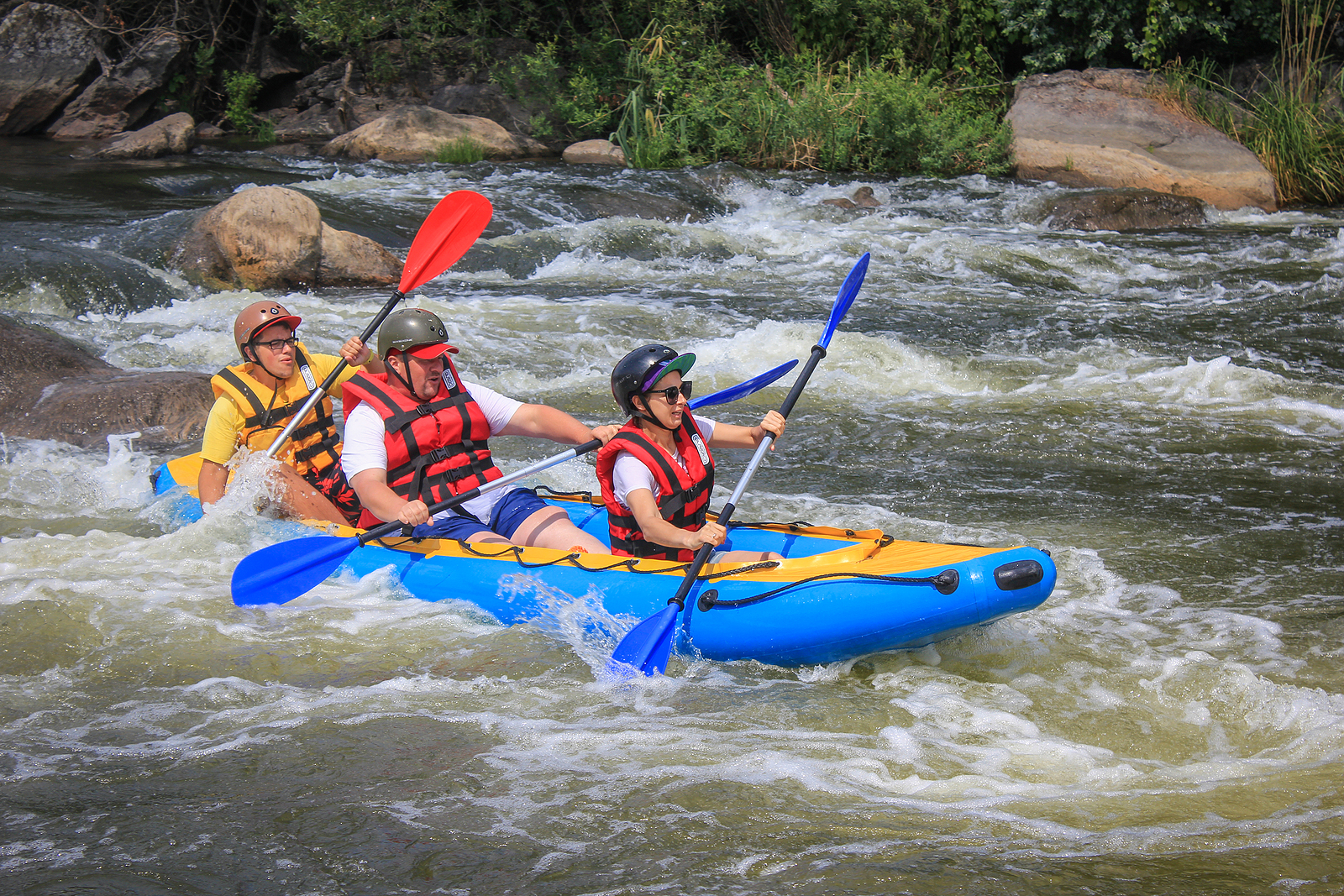
Bracing Stroke
The bracing stroke is a technique that helps you maintain balance when the kayak is tilted to one side. It is useful when you encounter rough waters or need to turn the kayak quickly. To perform a bracing stroke, follow these steps:
- Hold the paddle with both hands and arms extended above your head.
- Lean the kayak to one side until you feel the water pushing against the side of the kayak.
- Plant the paddle blade in the water on the opposite side of the kayak to the one you are leaning towards.
- Push down on the paddle blade to lift the kayak back to a balanced position.
Remember, it takes practice to master these advanced techniques. Start by practicing in calm waters before attempting them in rougher conditions. You will become a more confident and skilled paddler with time and practice.
Safety Measures
When paddling a tandem kayak, safety should always come first. Paddlers should keep a few key safety measures in mind to ensure a safe and enjoyable experience on the water.
Wearing Life Jackets
One of the most important safety measures when paddling a tandem kayak is always wearing a life jacket. This is especially important for beginners or those who could be stronger swimmers. Life jackets should fit snugly and correctly, with all straps and buckles secured. It is also essential to choose a life jacket appropriate for the paddling conditions, such as a Type III life jacket for calm waters.
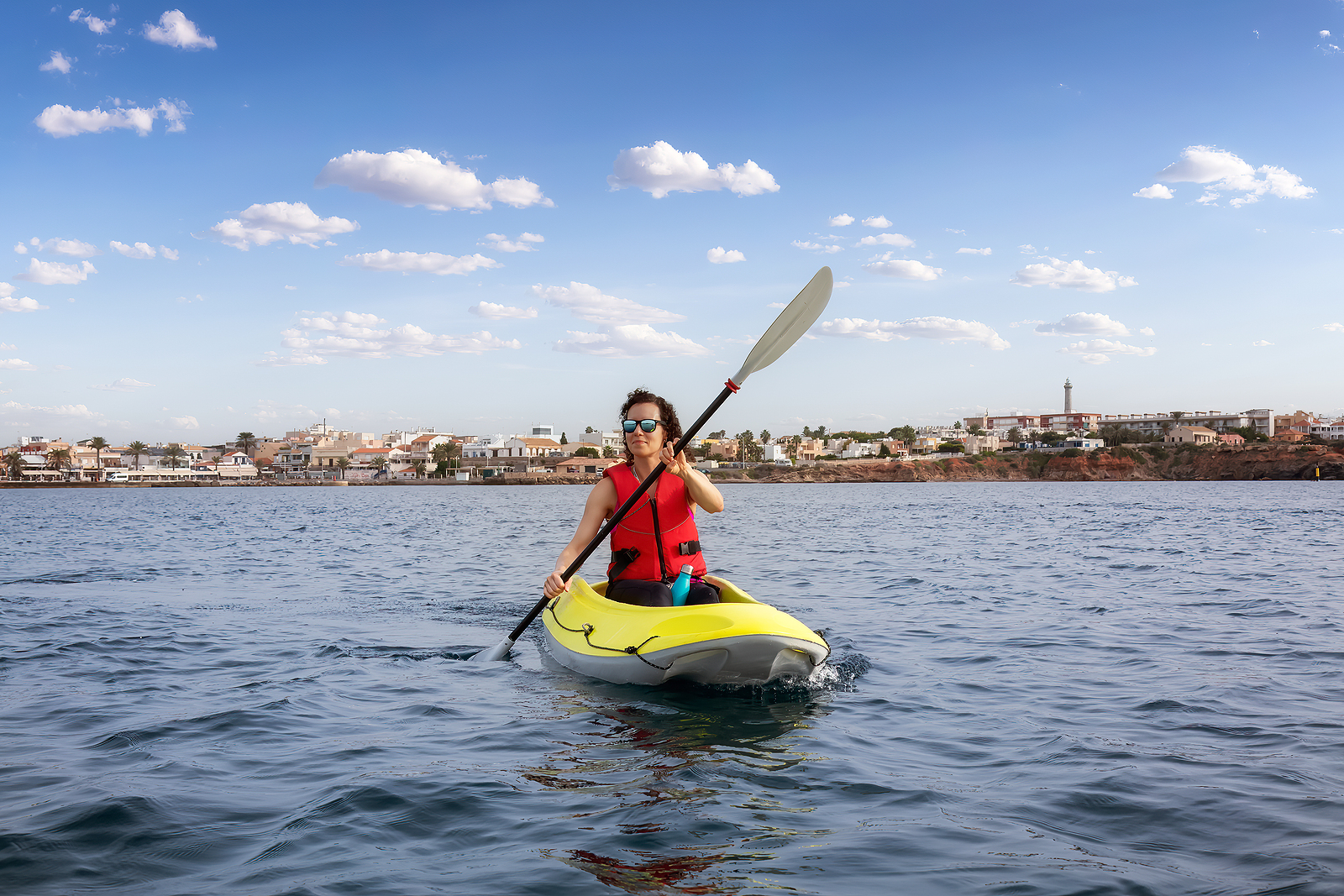
Understanding Weather and Water Conditions
Another essential safety measure is to understand the weather and water conditions before heading out on the water. Paddlers should check the weather forecast and be aware of any potential hazards, such as high winds or rough waters. It is also important to be aware of any currents or tides in the area, as these can affect the paddling experience and make it more difficult to control the kayak.
Paddlers should also be aware of any potential hazards in the water, such as rocks, logs, or other obstacles. It is important to avoid these hazards and to steer clear of any areas with strong currents or rapids.
In summary, when paddling a tandem kayak, it is important to prioritize safety. This includes wearing a properly fitting life jacket and understanding the weather and water conditions before heading out. By following these safety measures, paddlers can enjoy a safe and enjoyable experience on the water.
Maintaining and Storing Your Tandem Kayak
Cleaning Your Kayak
Maintaining a clean kayak is vital for its longevity. Saltwater and debris can cause damage to the kayak’s surface and hardware and even lead to corrosion. After each use, rinse the kayak with fresh water to remove saltwater or debris. Use a soft-bristled brush and mild soap to clean the kayak’s surface, and avoid using harsh chemicals that can damage the material.
For stubborn stains, a mixture of vinegar and water can be used to clean the kayak. Rinse the kayak thoroughly with fresh water after cleaning to remove any leftover soap or vinegar.
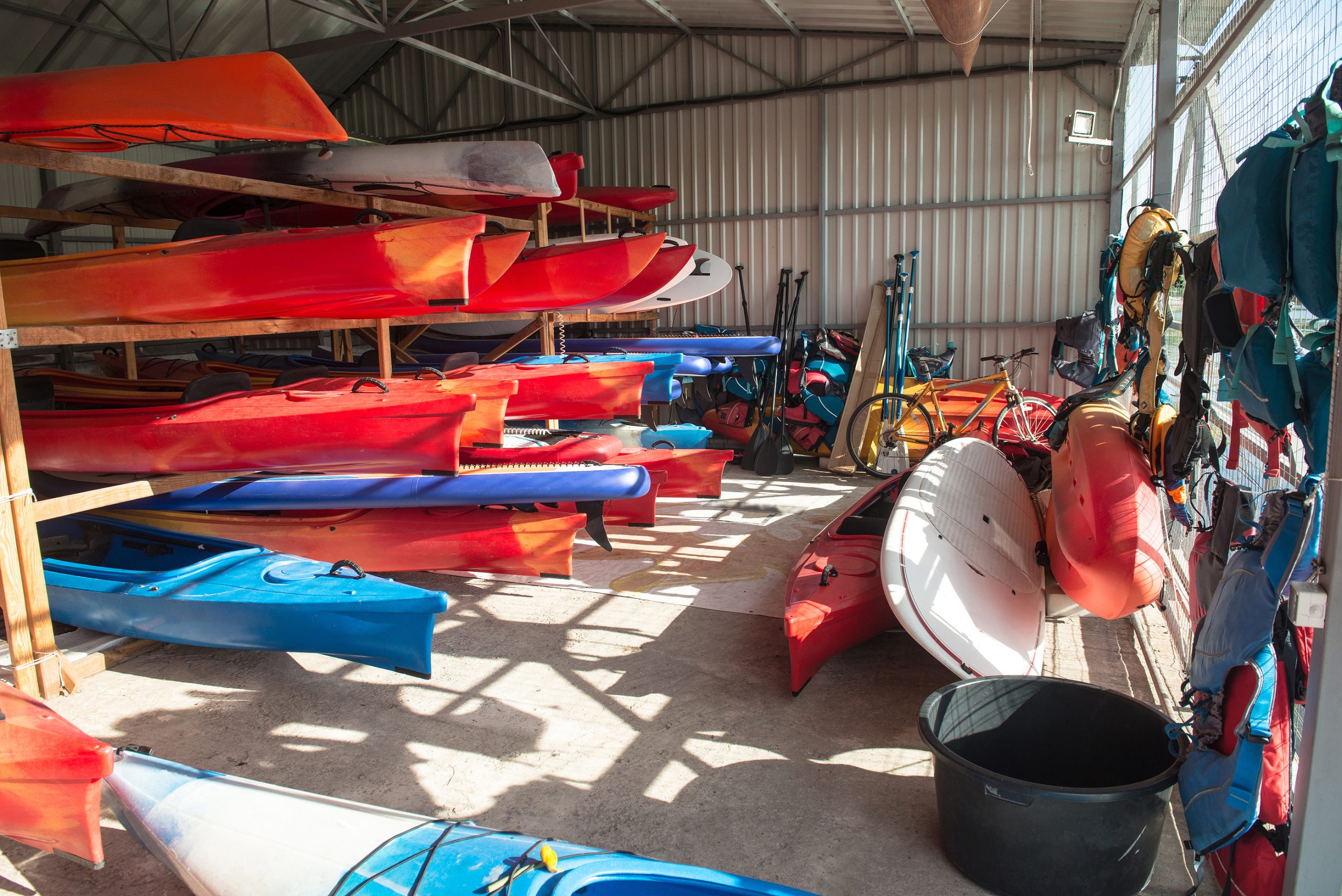
Proper Storage Techniques
Proper storage of your tandem kayak is essential to maintain its condition and prevent damage. When storing your kayak, please keep it in a cool, dry place away from direct sunlight. Exposure to sunlight can cause the kayak’s material to fade and weaken over time.
Store the kayak indoors or under a covered area. If storing the kayak outside, use a kayak cover to protect it from the elements. When storing the kayak, make sure it is not resting on its hull, as this can cause deformation. Instead, store the kayak on its side or upside down on padded supports.
It is also important to properly secure the kayak during storage to prevent it from falling or being damaged. Use straps or bungee cords to secure the kayak to a rack or wall mount, and make sure it is not in danger of being knocked over or damaged by other equipment.
By following these simple maintenance and storage techniques, you can ensure that your tandem kayak remains in good condition for years.
Benefits
Paddling a tandem kayak offers several benefits, making it an ideal choice for those who want to enjoy kayaking with a partner or friend. Here are some of the critical benefits of paddling a tandem kayak:
- Improved Communication: Paddling a tandem kayak requires teamwork and communication, which can improve the bond between partners. It helps build trust and cooperation as paddlers work together to navigate the kayak.
- Increased Speed and Efficiency: Paddling a tandem kayak allows more efficient movement through the water as both paddlers work together to propel the kayak forward. This can result in faster speeds and less fatigue for each paddler.
- Shared Experience: Paddling a tandem kayak allows for a shared experience between partners, making it an excellent way to bond and create memories. It’s a great way to enjoy nature and the outdoors with someone else.
- Easier to Transport: Tandem kayaks are often lighter and easier to transport than two single kayaks. This makes them an excellent choice for those who want to explore different bodies of water without the hassle of transporting two separate kayaks.
- Ideal for Beginners: Tandem kayaks are often broader and more stable than single kayaks, making them an ideal choice for beginners just starting. Balancing and maneuvering a tandem kayak is more manageable, which can help build confidence in novice paddlers.
Overall, paddling a tandem kayak offers several benefits, making it an excellent choice for those who want to enjoy kayaking with a partner or friend. From improved communication and shared experiences to increased speed and efficiency, a tandem kayak is a great way to explore the outdoors and build lasting memories.
Pros and Cons
Tandem kayaking has its advantages and disadvantages. This section will briefly outline some pros and cons of paddling a tandem kayak.

Pros
- Great for beginners: Tandem kayaks can be a great way for beginners to get into kayaking. They are broader and more stable than single kayaks, making them easier to balance. This can help build confidence in new paddlers and make their first few experiences on the water more enjoyable.
- Allows for teamwork: Paddling a tandem kayak requires teamwork and communication between the two paddlers. This can be a great bonding experience for couples, friends, or family members.
- A tandem kayak can be more efficient than two single kayaks. With two people paddling, the kayak can move faster and cover more distance with less effort.
Cons
- Requires coordination: Paddling a tandem kayak requires coordination between the two paddlers. If one person is out of sync, it can make the kayak challenging to maneuver and cause frustration.
- Less maneuverable: Tandem kayaks are wider and longer than single kayaks, making them less maneuverable. This can make navigating through narrow channels or around obstacles more difficult.
- Can be uncomfortable: Sharing a kayak with another person can be uncomfortable, especially if the two paddlers are different sizes. Finding a comfortable seating position for both paddlers can also be challenging.
Overall, tandem kayaking can be a fun and rewarding experience for those willing to work together and communicate effectively. It is crucial to weigh the pros and cons before deciding whether or not to paddle a tandem kayak.
Frequently Asked Questions
How do you determine who sits where in a tandem kayak?
In general, the more experienced or stronger person should sit in the back of the tandem kayak, while the person who is less experienced or weaker should sit in the front. This is because the person in the back is responsible for steering and controlling the kayak’s direction, while the person in the front helps to provide power and stability.
What are some tips for paddling a tandem kayak efficiently?
Some tips for paddling a tandem kayak efficiently include maintaining a steady pace, keeping the kayak balanced by distributing weight evenly, communicating with your partner to coordinate your strokes, and avoiding sudden movements or jerky motions.
How do you steer a tandem kayak?
To steer a tandem kayak, the person in the back should use a combination of forward and backward strokes on either side of the kayak. For example, to turn left, the person in the back should take a forward stroke on the right side of the kayak and a backward stroke on the left side. Communicating with your partner is essential to coordinate your steering and avoid collisions.
Can one person paddle a tandem kayak?
While one person can paddle a tandem kayak, controlling and maneuvering it without a partner can be challenging. Having at least two people in a tandem kayak is best to ensure safety and efficiency.
What are the advantages of tandem kayaking?
Tandem kayaking can be a fun and rewarding experience for partners or friends who want to explore the outdoors together. It can also be a great way to introduce beginners to kayaking, as the broader and more stable design of tandem kayaks makes them easier to handle than single kayaks.
What are the differences between tandem kayaks and canoes?
While both tandem kayaks and canoes are designed for two people, there are some critical differences between the two. Tandem kayaks are typically narrower and more streamlined than canoes, making them faster and more maneuverable. Conversely, canoes are broader and more stable, making them better for carrying larger loads or navigating rougher waters.





